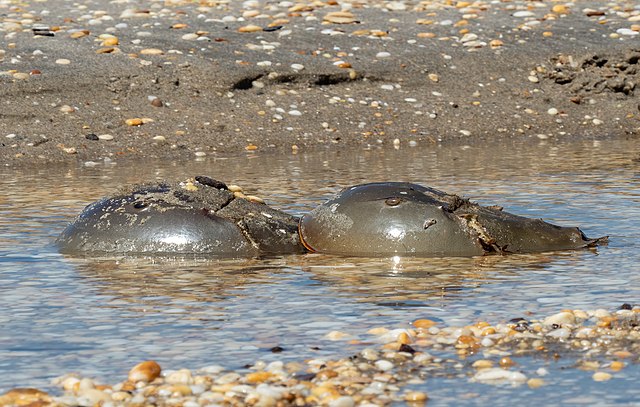A legislation in New York State has prohibited the fishing of horseshoe crabs for reasons other than educational studies.
Fishing quotas will only apply to scientific education purposes but not for biomedicine or commerce.
This effectively means that the long-lived “vulnerable-to-extinction” species will spawn freely this summer in the state.
According to a June 7, 2024 press release, the passing of the Horseshoe Crab Protection Bill will mostly protect Long Island’s Sound fisheries.
The Sound Estuary
The Sound is a marine estuary that connects two arms of the Atlantic between Connecticut and Long Island in New York. The estuary has a history of diverse marine species, as three rivers flow here onto the Atlantic.
However, the Sound misses out on unilateral marine protection decisions. For instance, while Connecticut passed its horseshoe crab protection law long beforehand, New York has only lately done so.
Fittingly, David Ansel, the Vice President of Water Protection at Save the Sound organization praised New York’s sustainable decision. He added that the Horseshoe Crab Protection Bill will bring crustacean safety across “all Long Island Sound.”
Biodiversity
Ansel’s lauding carries a world of meaning for it means extended biodiversity for other creatures, too.
For one, it insures sufficient food for the endangered red knot birds which feed on horseshoe crabs’ eggs during migration.
In November 2022, the shorebirds received support when neighboring Delaware extended an existing ban on female horseshoe crab harvests.
The decision helped save 150,000 female targets that the state’s fishing industry had set as quota for the 2023 season.
Biomedicine and Fishing
With the most recent ban in New York, fishermen will no longer use the crabs as baits for fishing sea snails.
Similarly, medics will have to forgo the harvest of the crustacean’s blood, which they use to test for vaccine purity. Though the crabs find their way back into the waters after researchers bleed them, not all survive thereafter.
In short, horseshoe crab protection in New York is focusing on sustainability. As the following statistics reveal, protection also extends to 14 other states, which set annual quotas for mostly biomedicine purposes.
United States Horseshoe Crab Statistics
Horseshoe crabs inhabit the Atlantic coast from Florida to Maine in 15 eastern states of the United States. Delaware has the biggest but indeterminate horseshoe crab population in the world. For this reason, it has a protected sanctuary measuring 1,500 miles2. In New York, key sources include Long Island Sound, Sandy Hook Bay, Jamaica Bay and Raritan Bay. Most states have a quota of fishing only 150,000 crabs per year but some jurisdictions have banned even that quota.
How much is the revenue from horseshoe crabs in the U.S.?
In 2022, the U.S. earned $1.1 million from the sale and value addition of horseshoe crabs. Regarding price, the cost of horseshoe crabs in New York climbed from 25 cents to $5 per crab between 2003 and 2023. Horseshoe crab blood, on the other hand costs around $15,000 a liter.
How many horseshoe crabs are harvested for biomedicine blood?
Each year, scientists collect around 500,000 horseshoe crabs, bleed them and then put them back into the ocean. The blood helps to test the sterility of human vaccines.
